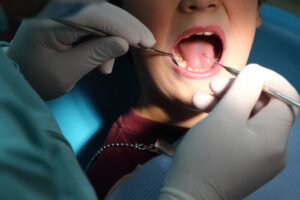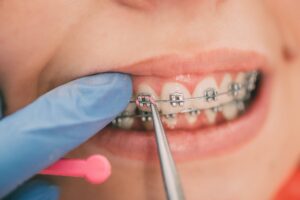Take care of your child's teeth

Take care of your child's teeth
Preventive care at the pediatric dentist's office and preventive care at home make up the two basic pillars of pediatric oral care. Although tooth decay and newborn and toddler caries (cavities) have become more common in recent years, a sound dental plan will eliminate the danger of both.
Evaluation and preservation of the child's dental health are the objectives of preventative oral care. The American Dental Association (ADA) suggests that children start going to the pediatric dentist for "well baby" checks at the age of twelve months. Unless otherwise advised, the majority of kids should keep going to the dentist every six months.
What kind of dental care can a pediatric dentist give my child's teeth?
The pediatric dentist conducts early decay detection exams, keeps an eye on orthodontic issues, checks jaw and tooth development, and serves as a useful resource for parents. The pediatric dentist also has a number of options available to further lower the child's risk for dental issues, including topical fluoride and dental sealants.
The child's mouth will be thoroughly checked, the teeth will be cleaned by a professional, topical fluoride may be applied to the teeth to protect tooth enamel, and any parental concerns can be addressed during a routine dental visit. The pediatric dentist can demonstrate effective brushing and flossing methods, offer parenting guidance on nutritional matters, offer tips for quitting thumb sucking and using pacifiers, and interact with the kid on his or her level.
The pediatric dentist may apply dental sealant to the molars when they erupt (often between the ages of two and three). By filling up the difficult-to-reach cracks on the molars, this sealant keeps out acid, food particles, and germs. Depending on the child's oral hygiene practices, dental sealant may last for many months or many years. A crucial weapon in the fight against tooth decay is dental sealant.
How might I assist at home?
When parents hear the phrase "oral care," they typically picture brushing and flossing.
However, effective preventative care involves a lot more, including:
Diet: Parents ought to provide their kids with a wholesome, well-balanced diet. Diets that are extremely high in sugar should be changed, and frequent snacking should be discouraged. After every meal, oral bacteria consume the remaining sugar in the child's mouth and release toxic acids that destroy tooth enamel, gum tissue, and bone. When feasible, space out snacks and give the kid healthy options like celery, carrots, and low-fat yogurt instead of sugary ones.
Oral habits: Although thumb sucking and pacifier use usually stop over time, they both have the potential to shift teeth. If the child needs to use a pacifier, pick one that is "orthodontically" sound. By doing this, the possibility of developing issues like crowdedness and small roof arches will be reduced. The pediatric dentist might offer advice for stopping thumb sucking or even a dental appliance.
Oral hygiene in general: Parents will occasionally clean pacifiers and teething toys by sucking on them. The child and the parents can both use the same eating utensils. Parents who engage in these behaviors increase their child's chance of developing early cavities and dental decay. Instead, give toys and pacifiers a warm wash in warm water, and whenever feasible, refrain from sharing spoons.When switching from a baby bottle to an adult drinking glass, sippy cups are a great transitional tool.
On the other hand, sippy cups filled with milk, breast milk, soda, juice, and sweetened water create tiny amounts of sugary fluid to continuously swish over baby teeth, which means acid is continuously attacking tooth enamel. Between the ages of twelve and fourteen months, or as soon as the kid develops the motor skills to grasp a drinking glass, sippy cup use should come to an end.
Brushing: Children's teeth should be brushed at least twice a day using a pea-sized amount of toothpaste and a soft-bristled brush. Up until the child is seven years old and is able to reach all parts of the mouth, parents should assist their child with brushing. Always choose ADA-approved toothpaste that is fluoridated after the age of two and non-fluoridated before the age of two. After each meal, parents of infants should rub the gum region with a clean cloth.
Flossing: Between-tooth decay and cavities are more likely to develop. The child is therefore susceptible to between-tooth cavities whenever two teeth erupt next to one another. The young patient's dentist can assist in demonstrating proper head placement when flossing and offer advice on how to make flossing more enjoyable.
Fluoride: Fluoride stimulates the remineralization of dental enamel while also assisting in the prevention of mineral loss. Too much fluoride can cause fluorosis, a condition where the permanent teeth develop white spots, while too little fluoride can cause tooth rot. It's critical to achieve the proper fluoride balance. The child's pediatric dentist can assess how much the child is currently getting and, if necessary, prescribe supplements.








